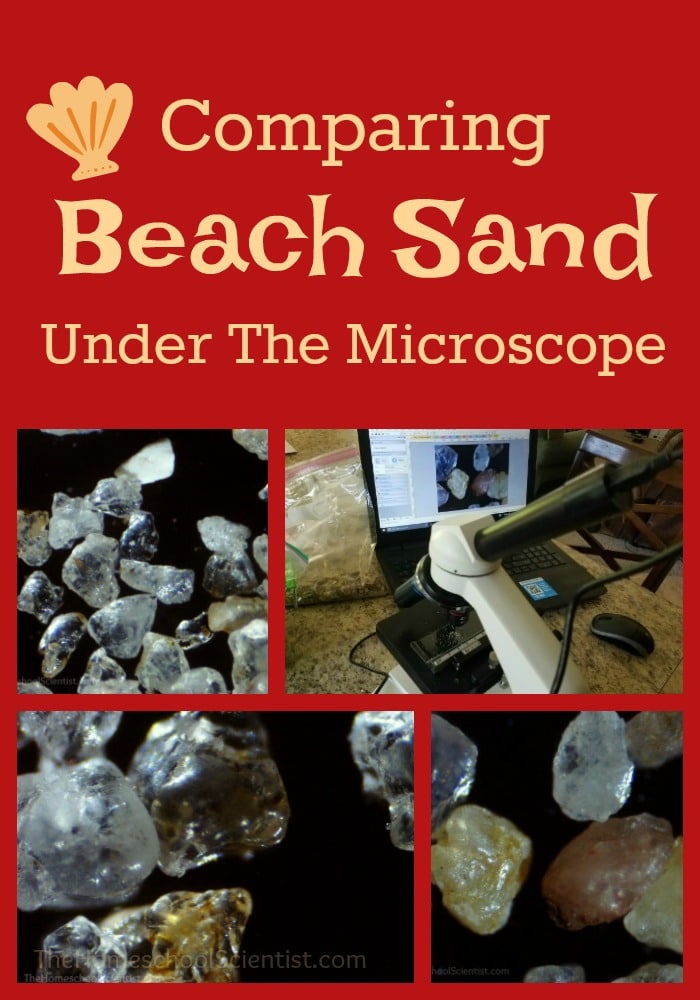Comparing Beach Sand Under The Microscope
The beach is one of my favorite places. The sun, the water, and the sand! I just love the feel of the sand between my toes and the way it slips through my fingers.
While grains of sand may look tiny, round, and uniform, each one is very different. They have different shapes, sizes, and colors. The grains aren’t even all made of the same thing and this varies depending upon the location of the sand.
Related post: How Waves Affect Beaches
What Is Sand?
Sand is a collection of mineral particles, rock fragments or organic material that has been broken down into small grains smaller than gravel, yet larger than silt. These grains have been broken down by weathering caused by water and wind.
The main component of sand is the mineral quartz. Quartz and other minerals are transported by streams, rivers, and winds to seashores. Sand is also made of rock particles. These can be transported like quartz or eroded from rocky shores by waves. Sand can, also, contain organic material such as shell and coral fragments.
The mineral and rock composition of sand causes varying colors of beaches. The soft, white sand of the United States’ Gulf Coast is caused by the round grains of sand that are almost totally made of quartz. The pink beaches of Komodo Island, Indonesia get their color from microscopic animals called Foraminifera, which produce a red pigment on the coral reefs. This pigment tints the white sand pink.
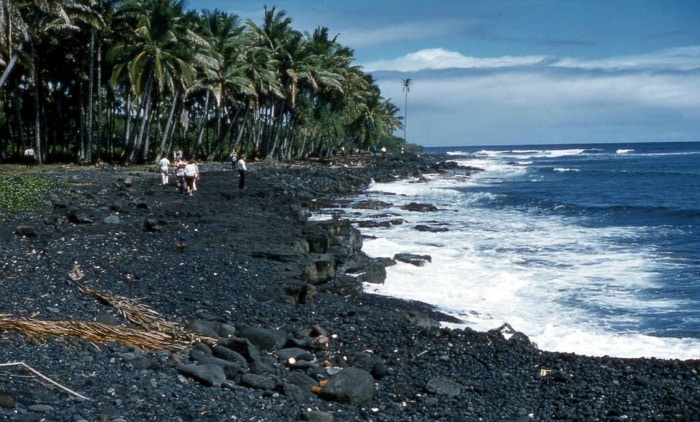
Papakolea Beach in Hawaii has green sand caused by a high amount of a silicate mineral called olivine. Hawaii, also, is home to black sand beaches. One of the most popular is Punalu’u Beach . The sand on this beach is mainly composed of fragments of black lava rock.
[adrotate banner=”64″]
Beach Sand Up Close
One of my favorite things to look at under the microscope is sand. It’s the only way to really see the difference in the grains of quartz and other materials.
Our family loves taking trips to the Gulf Shores, Alabama area. We just love the soft, white sand of the Gulf Coast. After learning more about sand and how all beaches are a bit different, we wanted to see beach sand from across the country under the microscope. So, I asked a few blogging friends to help me out and they sent us beach sand from the East Coast, the Gulf Coast, and the West Coast!
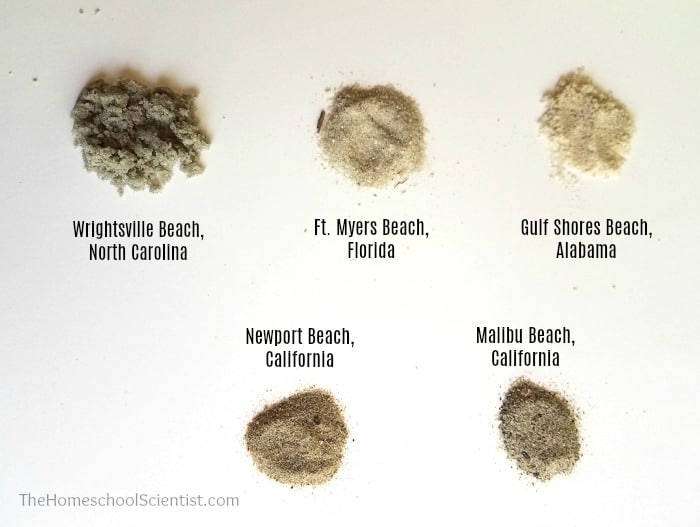
Each sand sample had a slightly different color and texture. Some of the sand felt very fine and smooth, while other sand felt more gritty and sharp. You can see the differences in color in the above photo. Under the microscope, we saw even more differences.
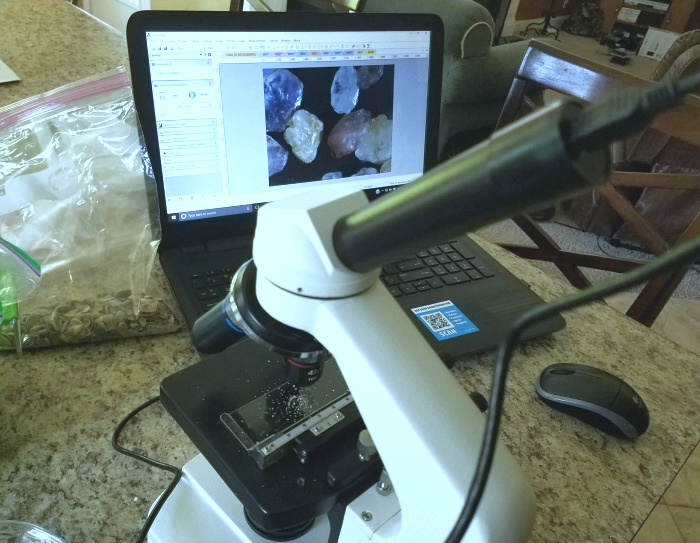
We took each sample and put some of the sand on a microscope slide and used a microscope eyepiece camera from MicroscopeCentral.com. This makes it easier for everyone to see and we can capture what we see to study later.
Related post: Choosing A Homeschool Science Microscope
Wrightsville Beach Sand
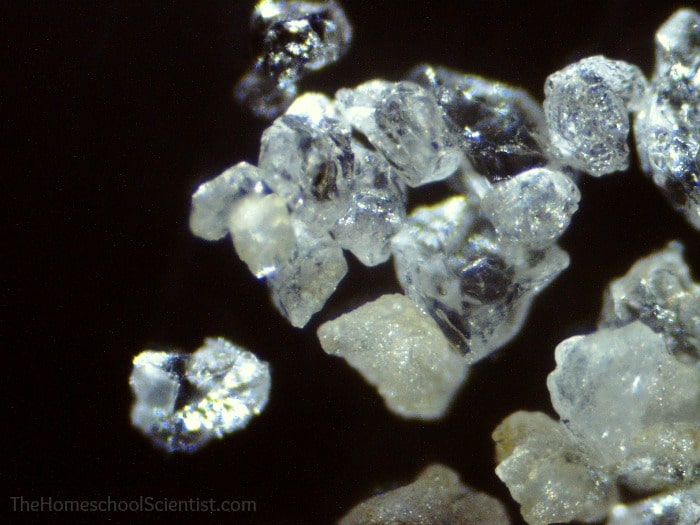
This sand was collected by Emily of Table Life Blog from Wrightsville Beach, North Carolina. We were surprised by the clear quartz grains under the microscope, since the sand collectively looked gray. I have read studies that have stated that the sand that makes up the beaches of the southeast United States is made up of approximately 90% quartz. The differences in the color of the sand in mass is due to the size and shape variances. Notice the sharp edges of the grains.
Fort Myers Beach Sand
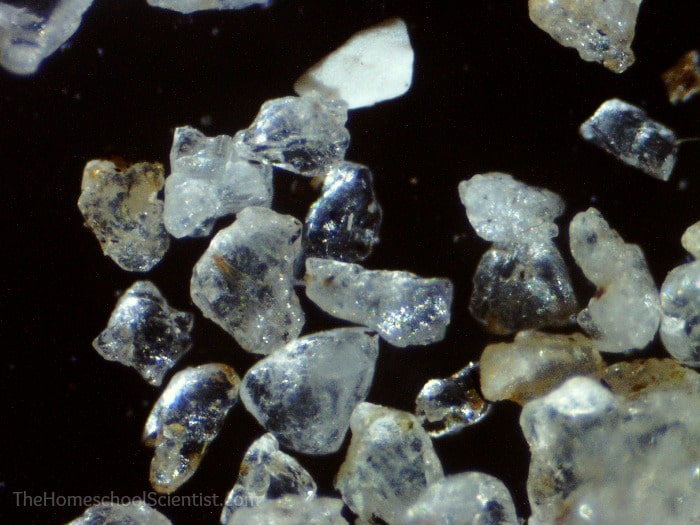
This sand was collected by Ashley at Some Random Lady from Fort Myers Beach, Florida. Again, you can see the clear quartz grains. Some of these grains have edges like the sand found in North Carolina, but most are much more rounded in shape.
Gulf Shores Beach Sand
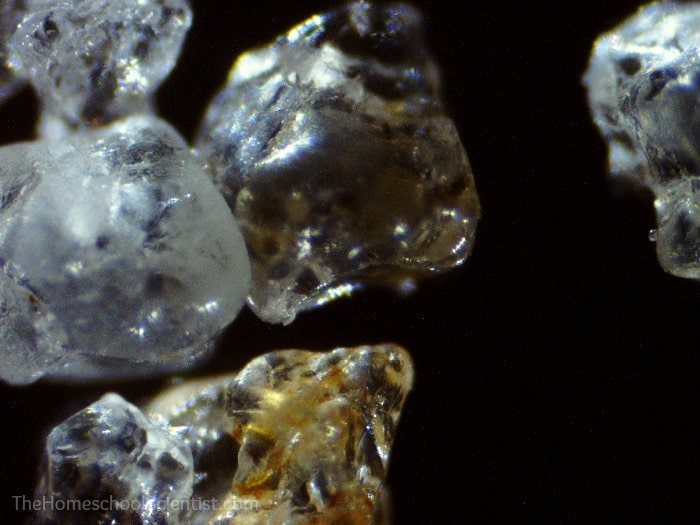
While on vacation in Gulf Shores, Alabama, we collected this sand. Notice the large, rounded grains of quartz. This contributes to the white color of the beaches and the squeak of the sand under bare feet when you walk on the beach.
These next two sand samples were collected by Tatiana at The Musings Of Mum. They are my first experiences with California sand and they are beautiful!
Newport Beach Sand
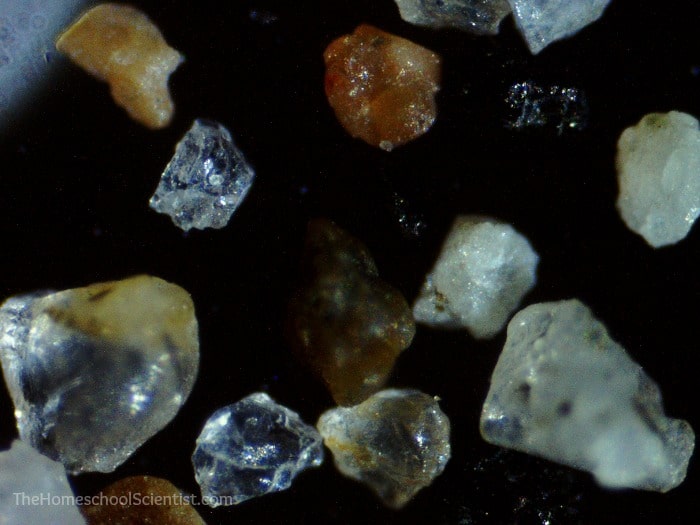
This sand is from Newport Beach, California. Notice the different colors and sizes of the grains. The sand on the beaches of California are composed of quartz, plus other minerals and rock fragments.
Malibu Beach Sand
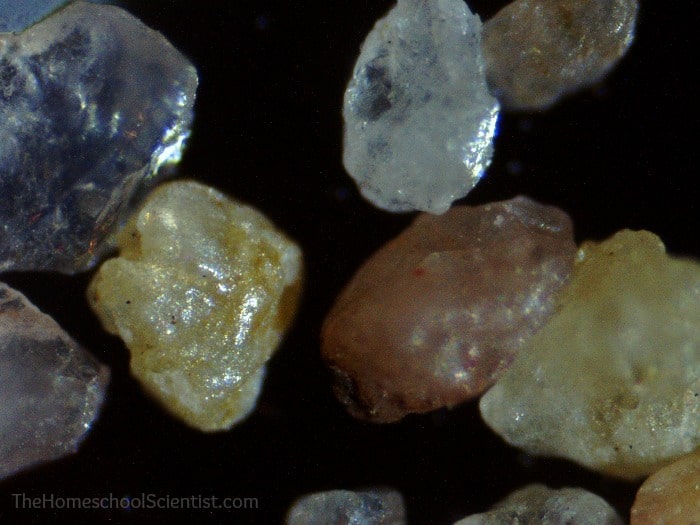
This sand from Malibu Beach, California is similar to the sand found in Newport Beach. The grains are a beautiful array of colors due to their mineral and rock make up.
Are you heading to the beach this summer? Collect some sand and look at it under the microscope. I wonder what you will see.
More Sand Resources
This study made us even more curious about the composition of sand around the world. We found a few resources with stunning images of grains of sand.
Sandgrains.com – microscope images of sand from around the world
Microlabgallery.com – microscope images of sand from oceans, rivers, and deserts around the world
Geology.com – sand grain gallery
Just for fun….
Sand Activities Kids Will Love
_________________________________________
